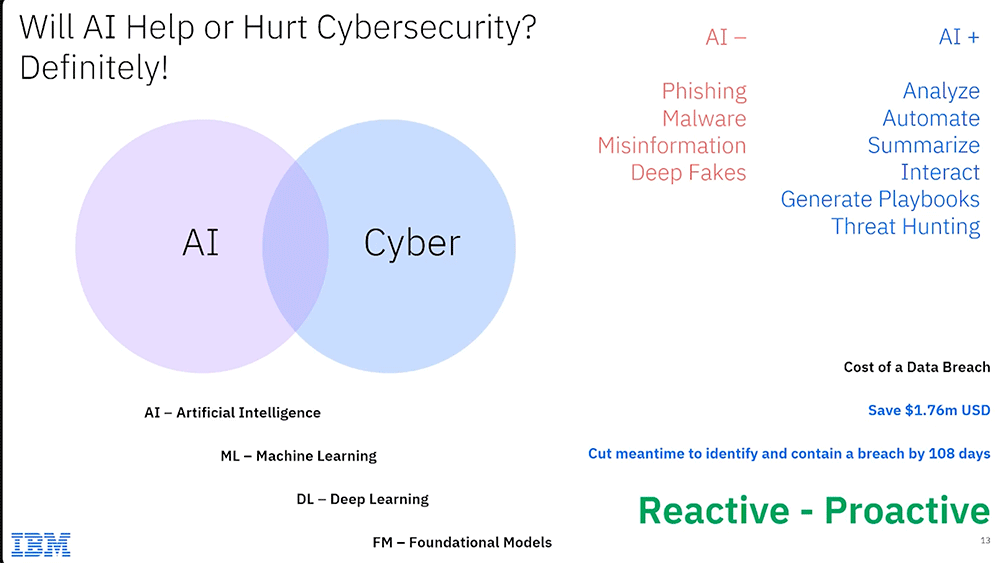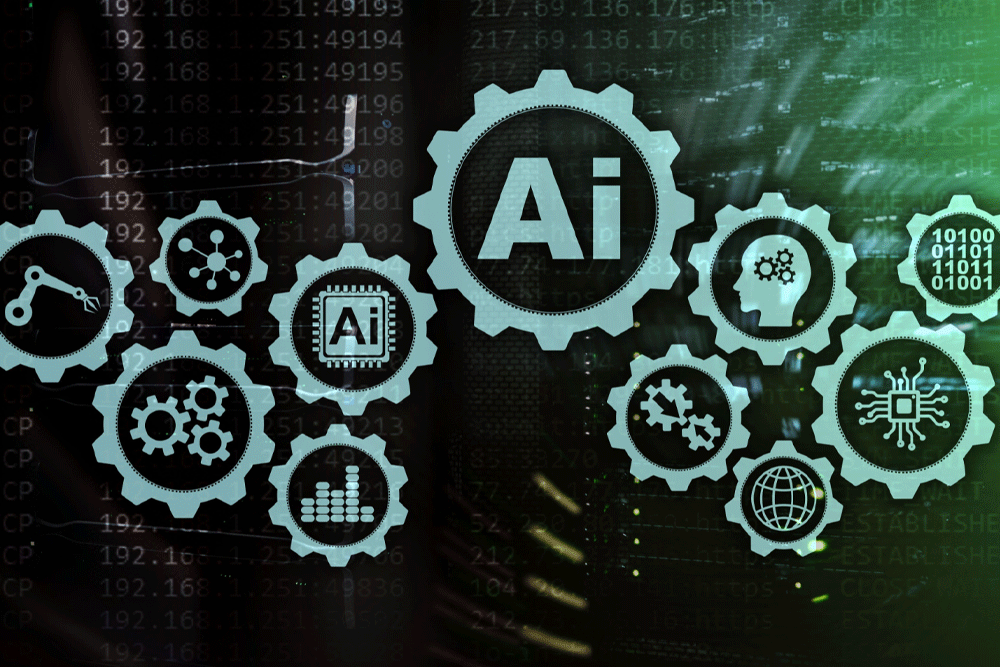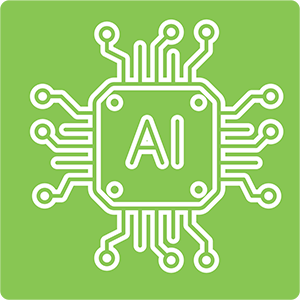What are the two hottest topics in technology? AI and cybersecurity of course. It’s what everyone’s talking about and– which may not be the best way to spend one’s time – speculating on.
 Instead of speculating, we went to our friend Kosta Makropoulos, Consulting IT Specialist at IBM for his take on these two words of the moment. Now many of you may know Kosta as the IT Storage Specialist, but his vast technology knowledge also includes AI and cybersecurity and here’s what he had to say.
Instead of speculating, we went to our friend Kosta Makropoulos, Consulting IT Specialist at IBM for his take on these two words of the moment. Now many of you may know Kosta as the IT Storage Specialist, but his vast technology knowledge also includes AI and cybersecurity and here’s what he had to say.
Let’s start with some of the downsides when it comes to AI and cybersecurity.

 The downsides of AI
The downsides of AI
AI can be incredibly powerful, not on its own, but in the hands of humans – well-meaning or not. So, when hackers get their hands on AI it can lead to phishing, malware, misinformation, and deep fakes.
Phishing
AI can help bad actors with their shortcomings, like bad language skills, improve their odds of getting people to believe what’s in their inbox. Using chatbots, hackers can create conversational dialog that seems very natural and can slip by our radar.
Malware
With the right prompts, AI can also create very sophisticated code which is great, but it can also include malware and back doors that can leave victims vulnerable. The key is to verify the code and not just blindly trust it.
Misinformation
Generative AI suffers from hallucinations in which it will make up false information or correlate unrelated things that don’t belong together to create a false impression. Hackers use these hallucinations for prompt injection, inserting bad information into the system. The key is to not be over-reliant on AI.
Deep fakes
AI can copy your image, your mannerisms, and your voice – everything that makes your outward identity. Mostly used for entertainment – check out Unreal Keanu Reeves – for a great example of entertaining deep fakes. But as with anything that is turned on its head, deep fakes are also being used to influence elections, by spies looking to infiltrate government agencies, and to wreck peoples’ reputations.
That’s a lot of negatives. So, let’s take a deep breath and see the positives of AI for cybersecurity.
 The upside of AI
The upside of AI
According to IBM analysis from 2023, AI can help reduce the cost and life span of a breach. Survey responders said the number one thing companies can do to reduce to cost of a data breach is implement AI with a close second of automation. With the average cost of a data breach at $4.5 million USD, AI can reduce that cost by about 40% with a savings of $1.76 million per breach.
Leveraging AI and automation can also help you cut down on the time it takes to identify and contain a breach by as much as 108 days, significantly cutting the damage it can do if it were allowed to run amok longer.
What can AI do for you?
Analyze
Using AI and machine learning, you can analyze large data sets to discover patterns that make it easy to see attacks before they happen and spotting outliers and anomalies.
Automation
We also must anticipate what to do next, and that’s where automation comes in. Using the next step of machine learning – deep learning – we can create foundation models that provide a layer of automation to cybersecurity. Instead of playing catch up with attacks, using automation, new cybersecurity solutions can get ahead by knowing what’s next, sometimes before the hacker does.
Summarization
Foundational models create a lot of information, but who has time to go through all of that information? Feeding it into AI makes it easy for us to correlate and summarize findings so we can use that data to protect ourselves.
See for yourself
This is just a taste of how AI can actually be beneficial in strengthening our cybersecurity. To learn more, check out the video of this brief presentation for yourself.





